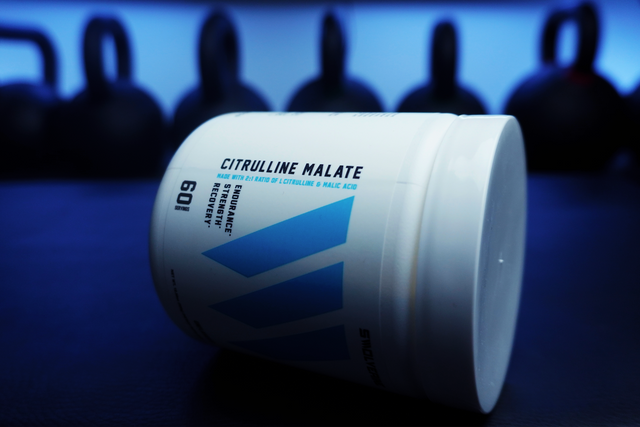Navigating the world of weight loss can often feel overwhelming, especially when faced with countless diets and nutrition trends. One question that frequently arises is, “How many fat grams should you consume daily for effective results?” Understanding the right balance of fat in your diet is crucial for achieving and maintaining your weight loss goals. Fats are not the enemy; in fact, they play a critical role in bodily function and can help satiate hunger, making it easier to resist unhealthy snacks. But how do you determine the right amount?
In this article, we will delve into the science of dietary fat, explore how many grams you should aim for based on your individual needs, and offer practical tips to unlock your weight loss potential. Equip yourself with the knowledge to transform your approach to eating and forge a path toward a healthier, fitter you!
Unlocking Weight Loss: How Many Fat Grams Should You Consume Daily for Effective Results?
Navigating weight loss can feel like information overload, especially when it comes to macronutrients. One of the most misunderstood is dietary fat. The question “How many fat grams should I eat to lose weight?” is more than just a numbers game—it’s about understanding fat’s role in your body, your goals, and your overall metabolic needs.
Despite years of low-fat diet messaging, fats are not the enemy. They’re critical for hormone function, brain health, nutrient absorption, and yes—even weight loss when used strategically. This article will walk you through the science, calculations, and considerations to confidently determine the right fat intake for your goals.
Understanding Dietary Fats: Types and Functions
Fats are one of the three primary macronutrients—alongside protein and carbohydrates. They:
-
Provide energy (9 calories per gram)
-
Support cell structure
-
Help absorb vitamins A, D, E, and K
-
Regulate hormones and brain health
There are four main types of dietary fat:
-
Saturated fats – found in animal products like butter, cheese, and red meat
-
Trans fats – industrially produced; now largely banned but still present in some processed foods
-
Monounsaturated fats – found in olive oil, avocados, and nuts
-
Polyunsaturated fats – found in fatty fish, flaxseed, walnuts, and include omega-3 and omega-6 fatty acids
According to Harvard T.H. Chan School of Public Health, replacing saturated and trans fats with monounsaturated and polyunsaturated fats can improve cholesterol levels and reduce cardiovascular risk.
The Role of Fats in Weight Loss
Healthy fats contribute to:
-
Satiety (feeling full), helping prevent overeating
-
Hormonal balance, especially sex hormones and insulin signaling
-
Metabolic support, particularly through medium-chain triglycerides (MCTs), which are more readily used for energy (St-Onge & Bosarge, American Journal of Clinical Nutrition)
Fats also help stabilize blood sugar and reduce cravings—especially when paired with protein and fiber.
Low-fat diets may hinder the absorption of fat-soluble vitamins and disrupt hormonal function, leading to symptoms like fatigue, poor recovery, or mood swings.
Recommended Daily Fat Intake: Guidelines and Practical Ranges
The Dietary Guidelines for Americans recommend that 20–35% of total daily calories come from fat. Here's what that looks like:
| Daily Calories | 20% Fat | 30% Fat | 35% Fat |
|---|---|---|---|
| 1,500 | 33g | 50g | 58g |
| 1,800 | 40g | 60g | 70g |
| 2,000 | 44g | 67g | 78g |
Keto diets flip the script, often requiring 70–80% of calories from fat, prioritizing ketone production over glucose metabolism (Paoli et al., European Journal of Clinical Nutrition).
But if you're following a moderate-calorie deficit approach—like what we teach at The Swole Kitchen—a fat intake of 25–35% of total calories is typically sustainable and supports satiety, recovery, and adherence.
How to Calculate Your Daily Fat Needs
Step 1: Determine Your Caloric Needs
Use your TDEE (Total Daily Energy Expenditure) to find out how many calories you burn daily. For weight loss, subtract 500–700 calories from your TDEE.
Step 2: Choose Your Fat Percentage
Pick a target within the 20–35% range. Most clients at The Swole Kitchen do best around 30% for long-term fat loss and metabolic health.
Step 3: Do the Math
Fat provides 9 calories per gram. Use this equation:
(Total calories × fat %) ÷ 9 = daily grams of fat
Example:
Calories = 1,600 (moderate deficit)
Target fat % = 30%
→ 1,600 × 0.30 = 480 calories from fat
→ 480 ÷ 9 = 53g fat per day
Fat Quality > Just Fat Quantity
Where your fats come from matters as much as how many you eat. Prioritize:
-
Extra virgin olive oil
-
Avocados
-
Walnuts
-
Wild-caught salmon
-
Chia seeds or ground flax
Limit:
-
Refined oils (soybean, corn)
-
Fried foods
-
Processed snacks with trans fats
-
Highly processed meats
A higher-fat intake filled with anti-inflammatory fats will benefit your heart, brain, and energy levels more than a low-fat, high-sugar alternative (Mozaffarian et al., Circulation).
Need Help Building a Fat-Loss Plan with the Right Macros?
At The Swole Kitchen, we specialize in custom macro-based nutrition plans that meet you where you’re at and evolve as you do.
Whether you're just learning how to balance your fats, carbs, and protein—or you've tried keto, fasting, and everything in between—we’ll build something that actually fits your body, schedule, and mindset.
Ready to unlock weight loss without food fear or fatigue? Let’s talk.
Healthy vs. Unhealthy Fats: Making the Right Choices
Choosing the right types of fat is a cornerstone of sustainable weight loss and long-term health. Not all fats are created equal—and understanding the difference between healthy and unhealthy fats can make or break your progress.
Healthy fats, including monounsaturated and polyunsaturated fats, are critical for heart, brain, and hormonal health. These fats are found in foods like olive oil, avocado, nuts, seeds, and fatty fish. Studies show that replacing saturated fats with unsaturated fats can reduce the risk of cardiovascular disease (Mozaffarian et al., New England Journal of Medicine).
On the flip side, trans fats (partially hydrogenated oils) and excess saturated fats (like those in red meats, cheese, and butter) have been linked to increased cholesterol and higher risk of heart disease (Harvard T.H. Chan School of Public Health).
Simple swaps to make better choices:
-
Cook with olive or avocado oil instead of butter
-
Add sliced avocado to salads or sandwiches
-
Snack on almonds or walnuts instead of processed chips
-
Eat salmon or mackerel twice a week for omega-3s
The Impact of Fat Consumption on Metabolism
Dietary fats don’t just influence calories—they actively affect how your metabolism functions.
One key factor is the thermic effect of food (TEF). While fats have a lower TEF than protein, they provide longer-lasting energy, helping regulate blood sugar and keep you satisfied longer.
Specific fats, like medium-chain triglycerides (MCTs) found in coconut oil, have been shown to increase energy expenditure. In one study, participants who consumed MCTs burned significantly more calories over a 24-hour period than those who consumed long-chain fats (St-Onge & Jones, Obesity Research).
Fats also play a major role in hormone production, particularly:
-
Leptin, which regulates satiety
-
Adiponectin, which enhances insulin sensitivity
-
Sex hormones like estrogen and testosterone
Too little dietary fat can impair hormone balance, reduce thyroid function, and slow metabolic rate (Leidy et al., Journal of the American College of Nutrition).
Common Myths About Fats and Weight Loss
Myth 1: “Eating fat makes you fat.”
False. Excess calories, not dietary fat alone, lead to fat storage. In fact, fat can help regulate hunger hormones, leading to reduced overall calorie consumption.
Myth 2: “Low-fat or fat-free diets are best for weight loss.”
Low-fat often equals high-carb or high-sugar, which can lead to energy crashes and cravings. Cutting all fats can also impair nutrient absorption (A, D, E, K) and immune health.
Myth 3: “All fats are bad.”
Healthy fats are essential. Monounsaturated and polyunsaturated fats support cardiovascular health, brain function, and inflammation regulation (Kris-Etherton et al., American Journal of Clinical Nutrition).
Tips for Incorporating Healthy Fats into Your Diet
Start with small, sustainable swaps:
-
Cook eggs in avocado oil
-
Top oats with chia seeds or ground flax
-
Blend nut butter into protein smoothies
-
Use hummus or guacamole instead of mayo
Add variety to ensure a well-rounded fat profile:
-
Nuts and seeds: almonds, walnuts, chia, flax
-
Cold-water fish: salmon, sardines, trout
-
Plant oils: olive, avocado, walnut
Track your fat intake to stay within goal ranges. Healthy fats are calorie-dense, so portion awareness is key—1 tablespoon of olive oil = ~14g fat / 120 calories.
Monitoring Your Fat Intake: Tools and Apps
Tracking tools help bring awareness and accuracy to your macro targets. Top options include:
-
MyFitnessPal: Large food database, barcode scanning, macro tracking
-
Cronometer: Micronutrient tracking + detailed fat breakdown
-
Lose It!: Great for goal setting and habit tracking
Want to go old-school? Try a food diary to increase mindful eating.
Pro Tip:
Working with a certified nutrition coach—like those at The Swole Kitchen—can help you interpret data, adjust your fat targets, and troubleshoot plateaus.
Conclusion: Finding the Right Balance for Effective Weight Loss
Finding the right balance of dietary fats is crucial for effective weight loss and overall health. Understanding the different types of fats and their functions can help you make informed dietary choices that support your weight loss goals. Healthy fats, such as monounsaturated and polyunsaturated fats, should be prioritized in your diet, while unhealthy fats, such as saturated and trans fats, should be limited.
Determining your daily fat needs involves calculating your total daily energy expenditure and deciding the percentage of calories that should come from fat. Monitoring your fat intake using tools and apps can help you stay on track and make adjustments as needed. Incorporating healthy fats into your diet can be simple and delicious, and making mindful choices can significantly impact your weight loss journey.
Remember that individual needs vary, and finding the right balance may require some experimentation and fine-tuning. Consulting with a healthcare professional or registered dietitian can provide personalized guidance and support. By equipping yourself with the knowledge and tools to make informed dietary choices, you can unlock your weight loss potential and achieve a healthier, fitter you.
Find similar articles:
Nutrition






